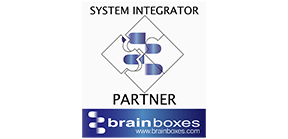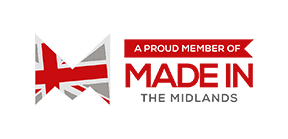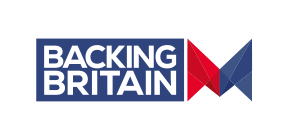What is Lean 5S?
- By Brett Griffiths
- 5S Process
- January 07 , 2021
- Share
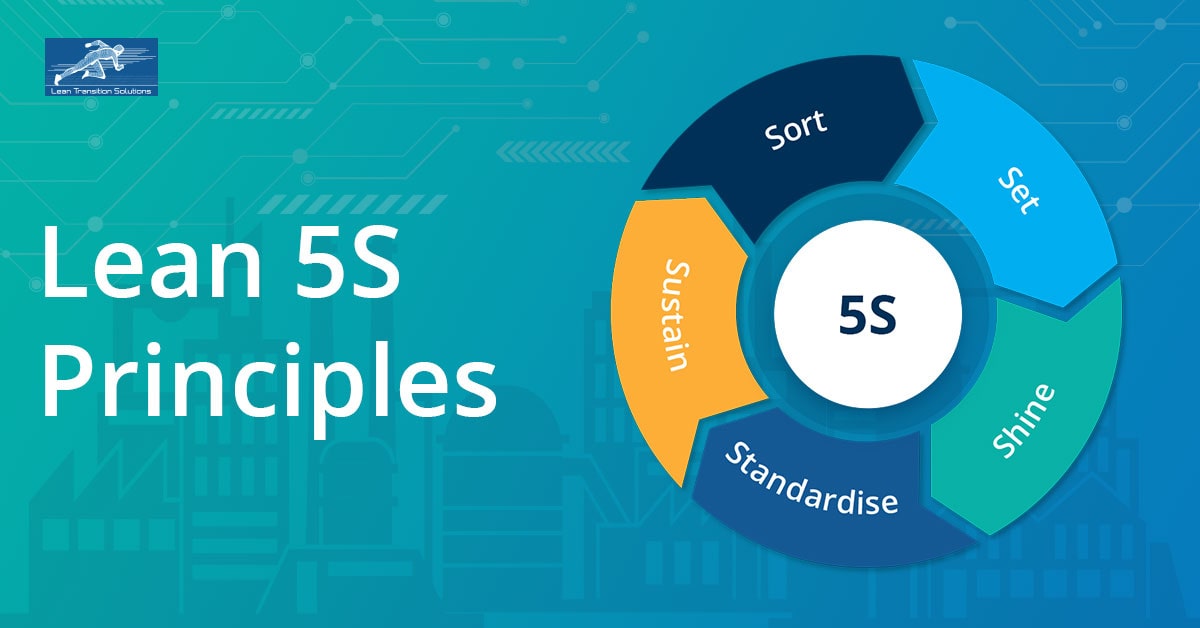
Over the years, 5S principles have proved to be very effective, ensuring maximum productivity achieved over time, saving and reducing waste. Many organisations have adopted this system to ensure continuous and sustainable growth. The process enables the organisation to be more productive, making it a conducive environment for the worker. 5S principles entail organisations to achieve a more stable and organised system. An organised workplace paves the way for a safer, efficient and productive environment. 5S prioritises efficacy and effectiveness within the workplace. The principles of 5S originated from five Japanese words: Seiri, Seiton, Seiso, Seiketsu, Shitsuke, which have been translated into English as 'Sort', 'Set in Order', 'Shine', 'Standardise', and 'Sustain'. In simple terms, 5S systematically accomplish total organisational cleanliness and standardisation. Let's see in detail what the 5S implies:
SORT - The first step of 5 S's is red-tagging because it calls for a simple red tag which eliminates the non required aspects at work. It is a two-way process that stimulates the employees to identify the redundancies and enables the managers and supervisors to initiate to dispose of the items.
SET - Set in Order, deals with organising the items that best supports the employees doing the work. It is all about "A place for everything and everything in its place'. Every item sorted in the SORT stage will be given specific storage space for easy access. SET phase creates an organised and uncluttered workplace where employees can find what they need the most to complete work.
SHINE - Work areas that contain contamination such as dust, dirt or oil are prone to cause product defects, equipment and process malfunction, and safety hazards to employees. SHINE identifies and removes these items and creates means for daily (or more frequent) removal. A checklist can be customised for a particular area, highlighting the areas to be scrubbed, and swept regularly.
STANDARDISE - Standardising a method for maintaining order and cleanliness is critical to 5S. While the checklist from S3 may define the essential points of order and cleanliness, S4 puts a structure to the process (who, what, where, when, how).
SUSTAIN - Sustain involves the improvement process for maintaining order and cleanliness. Sustain means not only sustaining the gains but also continuous improvement of the workplace. This phase, where the 'new normal' becomes a routine and employees get accustomed to it.
Implementing 5S principles in an organisation is easy, but ensuring the same is quite challenging. Determined action, team dedication and consistency in implementing the practice to ensure the correctness of the 5S process. Each process needs to be monitored periodically for continuous and stable enhancements. Consistency in 5S implementation acts as a driving force to improve organisational standards. To ensure progress and effectiveness of 5S, organisations can use 5S Audit and Assessment App to track on the 5S process.
Digitise the 5S Audit and Assessment with Saisho 5S App
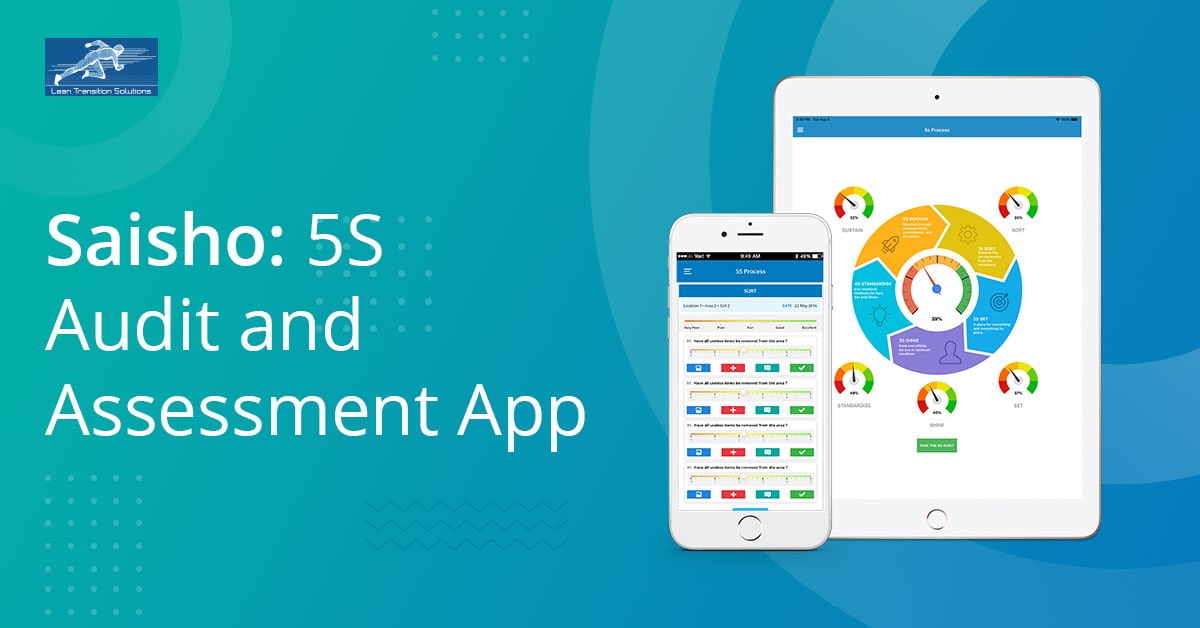
Saisho 5S Audit and Assessment App ensure continuous improvement by evaluating the 5S implementation at the organisation. The audit process emphasises to be agile, dynamic, and useful. With a regular audit process, organisations can track the graph of its performance and implement action plans to remove any anomalies.
Create new audits and assign to auditors/employees to ensure consistency within the organisation. As employee engagement increases, so do the productivity. Managers can add innumerable questions against each process. These questions can be assigned and allocated to each area where the auditor will conduct the audit process. Auditors can also add Red Tag and WDGLL images to support their findings. As mentioned before, consistency in 5S implementation and actions followed are critical. After the audit, auditors can initiate action plans and monitor the process regularly. A practical action plan has a positive impact on the employees and helps them perform better. Action plans act as a tool for continuous improvement.
A well-managed 5S strategy will not only eliminate waste but also improve the daily jobs of every employee. The purpose of 5S is to make a workplace function better by making it a more comfortable place to work. With Saisho, organisations can ensure a safe and secure working environment for their employees. It identifies hazards and sets preventive measures to keep workers safe during those operations. Using a digital safety checklist organisations can identify common warehouse and manufacturing hazards. What Does Good Look Like (WDGLL) and Red Tag photos can be easily stored and accessed later to refer to the preset standards. The red tags are unnecessary items that need to be thrown out, recycled, sold, or relocated. This helps the employees to differentiate items tagged as unwanted. With the report generated on each audit, organisations can evaluate the impact 5S program and identify and implement improvement strategies.
Lean 5S within the organisation has become an inevitable part of the business for smooth operations. A regular assessment helps employees understand and analyse the importance of 5S and encourages them to continue the work to get desired results. Through the implementation of 5S principles, organisations will see an increase in productivity, efficiency and effectiveness. Get Saisho 5S free trial now!
Start Free Trial
LEAN TRANSITION SOLUTIONS
The Old Vicarage, Pershore Road, Upton Snodsbury, Worcester, Worcestershire, WR7 4NR, United Kingdom.
Lean Transition Solution
-
Lean Industry 4.0 Solutions
- TITAN:Computerised Maintenance Management System
- Data Point:Computerised Balanced Scorecard
- Janus: Automated Shop-floor Data Capture System
- T-Card: Integrated Production Planning and Plant Level Execution System
- JDI: Maintenance Automation App
- Maximus: Integrated ERP System
- e-Contractor: Integrated In-house Contractor Management System
- Q-Point: Integrated Quality Management System
- Safety-Point: Integrated Health and Safety Management System
- Lean Assessment: Lean Audit and Assessment System
- Saisho: Lean 5S Audit and Assessment App
- Emergency Response App: To Manage Emergency Situations
-
Leadership 4.0 Solutions
- Your Career Academy(YCA): Learning and Development System
- YCA e-Learning : Management System
- MentorYou(MU): Mentoring App
- Leadership 4.0 : Leadership Transformation Program
- Lean Manufacturing Workshop
- Lean Manufacturing Consulting
- ILM Accredited Green Belt Training and Certification Program
- ILM Accredited Black Belt Training and Certification Program
- Software Development Service
- Resources
- Company
- Contact
